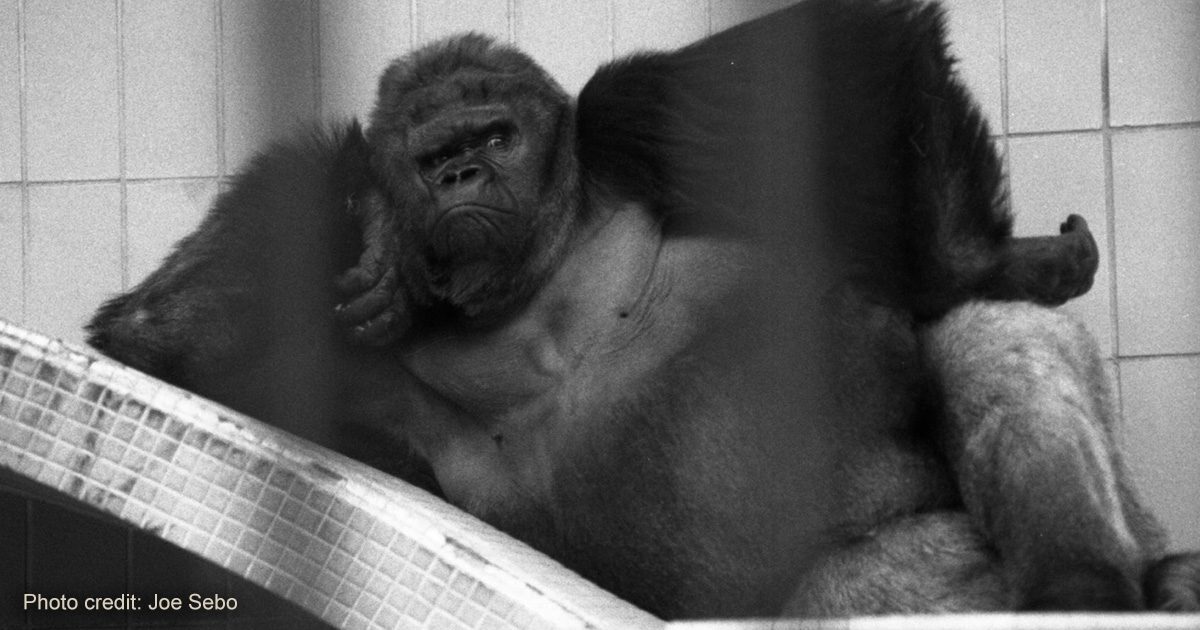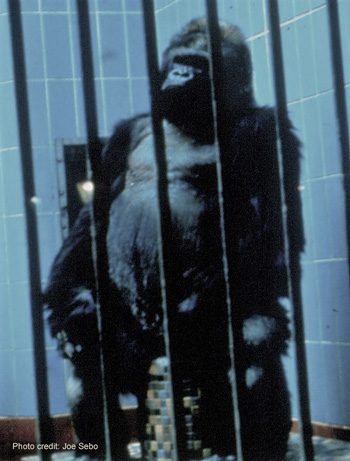
Mar 16, 2023 Coping with Captivity: The Tragic Journey of Willie B.
This tale is the first in a three-part series about Willie B., Atlanta’s iconic ape and one of the most famous gorillas in the world. Willie B., named after the long-serving Mayor of Atlanta, William B. Hartsfield, was captured in Cameroon, probably in 1960, and was estimated to be three years old when he arrived in Atlanta in 1961.
Among the diverse species of nonhuman primates on the living earth, gorillas are remarkable for their immense size and strength, cohesive family life, and superior intelligence. A close relative of humankind, the gorilla has stimulated the imagination and scrutiny of both creative writers and dedicated scholars. Novels and films have enlarged the image of the species, while single males such as the famed Gargantua have thrilled and frightened audiences who paid good money to visit them in zoos and circuses worldwide. The giant gorilla King Kong is the most fearsome creature ever depicted since the first film was produced in 1933 by RKO Pictures.
This universal curiosity about gorillas led to a race to capture specimens alive. Infants and young gorillas were highly sought after by zoos, and the expeditions sent to capture them were brutal and bloody. Many gorilla family members were slaughtered to secure the infants and young gorillas for the long journey by land and sea to Europe and North America.
The lowland species was the most accessible because large populations were once found in West and Central Africa. Only a few mountain gorillas (subspecies) have been exhibited in zoological parks. While lowland populations are declining, the wild mountain gorillas of Rwanda, Uganda, and the Congo are thriving.
When exhibited in a steel and concrete cage at the municipal zoo, Willie B. was one of many singleton gorillas shown in the United States. Other famous gorillas were popular in big cities such as Chicago, New York, Philadelphia, San Diego, and St. Louis. Gargantua attracted visitors to the Ringling Brothers’ winter headquarters in Sarasota, Florida. Although gorillas in nature are social creatures, living in family groups led by a dominant male, exhibitors chose to feature only single males. Most of these animals were doomed to a life of social deprivation. Willie B.’s early life was no exception. He spent every day in a hardscape cage without access to the soft substrates found in the lush rainforest habitat where he was born.
In 1975, when I arrived in Atlanta to join the faculty of Emory University, I met Willie B. for the first time. He was approximately 17 years old. The thick iron bars and unbreakable glass barriers that confined him made him look like a felon. Of course, he was imprisoned through no fault of his own. He was clearly a victim, and I immediately felt sorry for him. Although Atlanta citizens had learned to love and appreciate him, few zoo visitors understood the complex social behaviors of gorillas in the wild. He received excellent treatment from his human caretakers, who were attentive to his organic needs, talked to him, and showed him affection.
As a young gorilla, staff were able to interact with him in his cage. But he grew too large and too strong for play. Once staff withdrew from contact, I am sure he missed their companionship, but no effort was made to acquire other gorillas to join him. It took many years before established zoos began to breed gorillas successfully. Willie had to wait decades to realize his full potential as a social being.
With time, staff and visitors learned that Willie B. would respond if they ran from one end of his cage to the other on the public side. He would play a game of chase with them, and this served as his only form of stimulation during his first two decades of life in the zoo.
For Willie B., years of boredom and his lack of social experience suggested that he would not be a good candidate for breeding even if suitable social partners could be found. I returned to his cage often to observe him. He had an engaging personality even at a distance, and he was such a marvelous physical specimen with his massive head and silvery shoulders. He was lonely, but he still carried himself like a silverback. Atlanta’s zoo in the seventies was dilapidated and underfunded, but its fate, along with Willie B.’s, was about to change.
Dr. Terry L Maple is currently a Psychology faculty member at the College of Charleston in South Carolina, following a long and highly successful career as an academic and zoo professional in Atlanta, Georgia, Palm Beach, Florida, and Jacksonville, Florida. The Center for Conservation and Behavior supports Dr. Maple’s successful doctoral student mentoring program. Dr. Maple was the founding editor of the academic journal, Zoo Biology, and is the author of eleven books and more than two hundred academic articles.



